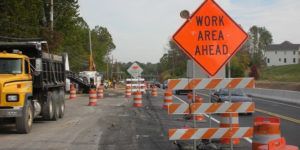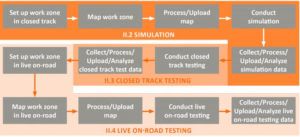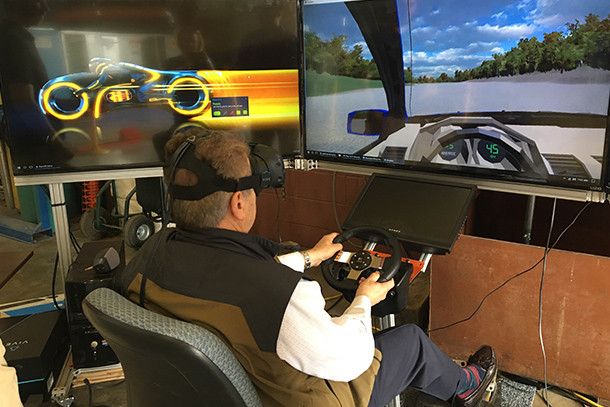In what will be the first project of its type in the USA, the Pennsylvania Department of Transportation (PennDOT) has been awarded an US$8.4m grant from the US Department of Transportation (USDOT) to test the safe integration of automated driving systems (ADS) into highway work zones.
According to the most recent PennDOT data, the number of work zone crashes in the state has steadily increased over the last decade, reaching 2,075 in 2016. The agency notes that due to the state’s leading academic institutions Pennsylvania has become center for the development and testing of Automated Vehicles (AVs). However, PennDOT says that during their on-road testing it has become clear that AVs do not perform well in work zones and routinely require human intervention, and in many cases, testers try to avoid work zones altogether. Unlike other AV challenges, such as variable weather conditions, work zones offer a unique opportunity for industry and the public sector to collaborate to resolve this issue and safely advance self-driving technology.
The USDOT grant application was submitted by PennDOT, along with core partners including: Pennsylvania Turnpike Commission (PTC); Pennsylvania State University (PSU); and Carnegie Mellon University (CMU). They will be supported by a consultancy team of: HNTB; Michael Baker International (MBI); Deloitte Consulting LLC; and Drive Engineering Corp; and industry partners PPG Industries Inc (PPG) and Qualcomm.
 The project’s goal is to develop a consistent approach to allow for AVs to safely operate in work zones. PennDOT plans to take a systematic, incremental approach of working with testers in simulation and on a closed track to verify the proposed AV solutions that will improve safety and serve as a logical common ground between testers and infrastructure owners/operators. The project will focus on a combination of connectivity, machine visioning, and high-definition mapping, and will perform demonstrations in a variety of work zones configuration with varying scale, complexity, and duration. After successful testing, the project team aim to safely integrate the solutions into limited, small-scale deployments.
The project’s goal is to develop a consistent approach to allow for AVs to safely operate in work zones. PennDOT plans to take a systematic, incremental approach of working with testers in simulation and on a closed track to verify the proposed AV solutions that will improve safety and serve as a logical common ground between testers and infrastructure owners/operators. The project will focus on a combination of connectivity, machine visioning, and high-definition mapping, and will perform demonstrations in a variety of work zones configuration with varying scale, complexity, and duration. After successful testing, the project team aim to safely integrate the solutions into limited, small-scale deployments.
“I am thrilled that the efforts of the department and our partners in the realm of automated vehicle technology have received national recognition,” said PennDOT’s secretary, Leslie S Richards. “Crashes in highway work zones have killed at least 4,700 Americans, more than two a day, and injured 200,000 in the last five years alone. If we can improve how AVs interact with work zones, there will be significant safety benefits for the traveling public.”





